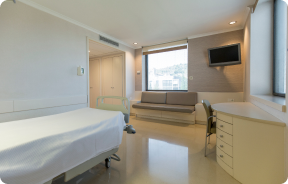

 Centro Médico Teknonen/health-centers/centro-medico-teknon
Centro Médico Teknonen/health-centers/centro-medico-teknon- Centro Médico Teknonen/health-centers/centro-medico-teknonHospital Universitari General de Catalunyaen/health-centers/hospital-universitari-general-catalunya
 Centro Médico Teknonen/health-centers/centro-medico-teknonHospital Universitari Sagrat Coren/health-centers/hospital-universitari-sagrat-cor
Centro Médico Teknonen/health-centers/centro-medico-teknonHospital Universitari Sagrat Coren/health-centers/hospital-universitari-sagrat-cor
Mast Cell Activation Syndrome is a condition characterized by the abnormal activation of mast cells, a type of immune cell that releases chemicals like histamine and tryptase in response to various triggers. This excessive release can cause a wide range of symptoms affecting multiple body systems, making Mast Cell Activation Syndrome a complex and often challenging condition to diagnose and manage.
Symptoms of Mast Cell Activation Syndrome can vary widely from person to person, often fluctuating in severity and affecting multiple organ systems. Common symptoms include:
- Flushing, itching, and rashes (such as urticaria or hives)
- Angioedema (swelling beneath the skin)
- Diarrhea and bloating, which can resemble irritable bowel syndrome
- Wheezing, shortness of breath, and nasal congestion
- Asthma-like symptoms or throat tightness
- Low blood pressure, fainting, or dizziness
- Palpitations or rapid heart rate (tachycardia), often seen in association with Postural Orthostatic Tachycardia Syndrome (POTS)
- Headaches, brain fog, and difficulty concentrating
- Mood swings, anxiety, or depression
- Fatigue, body aches, and overall malaise
- Sensitivity to temperature changes and certain foods or chemicals
Due to this broad range of symptoms, Mast Cell Activation Syndrome is often misdiagnosed or confused with other conditions, such as allergies, irritable bowel syndrome, or anxiety disorders.
Diagnosing Mast Cell Activation Syndrome can be complex because symptoms are varied and often overlap with other conditions.
- Elevated serum tryptase, ideally measured during or immediately after a reaction, can indicate mast cell activation.
- Urine tests to measure mast cell mediators, such as histamine and prostaglandin D2, may be useful. These should be collected during symptom flares for more accurate results.
- Elevated plasma histamine levels, while less specific, can provide supportive evidence.
Provocation tests are generally not recommended due to the risk of severe reactions.
A diagnosis of Mast Cell Activation Syndrome generally requires documentation of episodic symptoms involving multiple organs, laboratory evidence of mast cell activation, and symptom improvement with mast cell stabilizing or antihistamine medications.
The management of Mast Cell Activation Syndrome involves a multifaceted approach, focusing on controlling symptoms, minimizing triggers, and stabilizing mast cell activity.
Avoidance of triggers: Common triggers include certain foods (e.g., alcohol, aged cheese), temperature extremes, stress, infections, and chemicals (e.g., perfumes or cleaning agents). Identifying and avoiding triggers is a foundational aspect of managing Mast Cell Activation Syndrome.
- Antihistamines: Both H1 blockers (e.g., cetirizine, loratadine) and H2 blockers (e.g., ranitidine, famotidine) can reduce histamine-related symptoms.
- Mast Cell Stabilizers: Cromolyn sodium or ketotifen can help stabilize mast cells, reducing the likelihood of mediator release.
- Leukotriene Inhibitors: Medications like montelukast may be beneficial for patients experiencing respiratory symptoms.
- Corticosteroids: For severe or acute episodes, corticosteroids may be used, but long-term use is generally avoided due to side effects.
- Epinephrine: For severe reactions or anaphylaxis, patients may need to carry an epinephrine auto-injector.
A low-histamine diet can be beneficial for some patients. Avoiding high-histamine foods like alcohol, fermented foods, and certain fruits may help reduce symptoms.



































